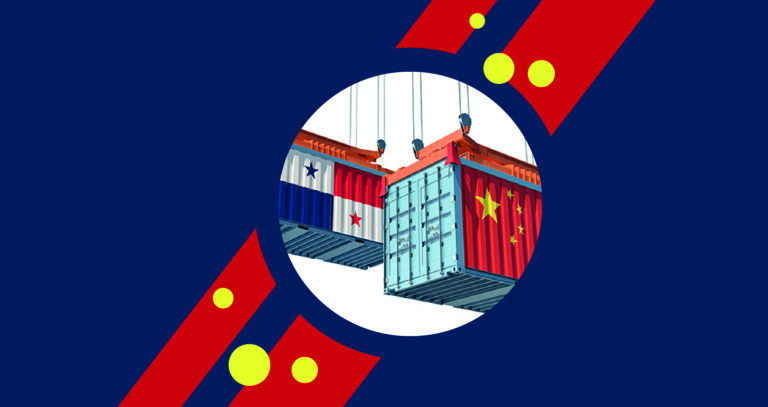By Alonso Illueca
The Republic of Panama and the People’s Republic of China established diplomatic relations in 2017. Over the past six years, China’s level of influence and interference in Panama has increased considerably. Although there was already a fluid commercial relationship before establishing these relations, it has been since 2017 that the influence and consequent interference in Panamanian affairs have become more visible.
The rapprochement has been followed by a series of practices contrary to the values and principles of the rules-based international order to which Panama adheres, including democracy, human rights, and transparency. The People’s Republic of China has subsequently exploited Panama’s deficiencies in these principles and values.
This study analyzes the different ways in which China exerts its influence in Panama. It begins with the symbolic struggle at the entrance of the Panama Canal in the Panamanian Pacific, a symbol of generational efforts in favor of the recovery of national sovereignty. It also considers formal or legal issues linked to bilateral treaties signed by both parties and the Chinese refusal to adhere to the neutrality protocol of the Panama Canal.
This study also weighs a critical strategic issue, the control, by the Hong Kong company Hutchison-Whampoa, today CK Hutchison Holdings, of the two main ports bordering the Canal, Balboa in the Pacific and Cristóbal in the Caribbean. The influence and alleged Chinese control over such a company have even raised alarms in the Southern Command of the United States of America.
The study covers another equally sensitive topic: the fight from Minera Panamá for control of copper in the Isthmus country. This is a fact that, in turn, illustrates how issues such as share control of a company and negotiation strategies with the State are similarly used by China in different areas (ports and mining).
Likewise, this analysis delves into the study of different infrastructure works, such as a convention center, a cruise port, and the fourth bridge over the Canal, which raise fascinating parallels with those of Hutchison and Minera Panamá. Regarding security, this study also ponders the cases of Colón C2, the use of the “safe city of Shenzhen” model, cybersecurity in San Miguelito, the use by China of corporate structures, and the Panamanian flag in illegal, unreported, and not regulated fishing. Finally, this paper analyzes the exercise of political influence and how it shapes the narrative at the highest levels of the Panamanian government.
The conclusions are straightforward. The Republic of Panama is unprepared to expand its relationship with China from an economic, geopolitical, strategic, and accountability perspective. There is a general lack of knowledge about how the Chinese interests operate in Panama, leaving the Panamanians in a position of strategic weakness.






